Last Updated on December 27, 2012 by stevehoggbikefitting.com
Colby Pearce was recently profiled on the popular site, PezCycling News. The following is reprinted with permission and can also be found here.
PEZ Talk: Colby Pearce
By Edmond Hood
Over the last 15 years, Colby Pearce has won on mountain bikes and road bikes – and most notably, on track machines. He’s won on velodromes at US championships, Pan Am Championships and at UCI World Cup level and now he’s passing on the knowledge those experiences gave him; as a coach. One of the first steps in coaching is that you have to be sure that your client is sitting on his bike, properly. We were intrigued by Colby’s commitment to ‘bike fit,’ which involved him flying to Australia and thought we’d better learn more.
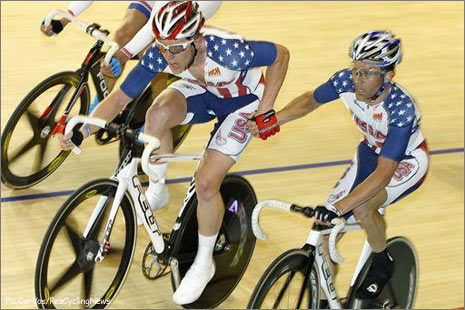
PEZ: What made you get into ‘bike fit,’ Colby?
I’ve been interested in bike fit for years. It’s an aspect of the sport which is buried in mythology and folklore. I started doing fits years ago on my clients, dabbling and researching different methods, reading everything I could on the topic. Last year I began to read a lot of Steve Hogg’s articles, his website is an enormous resource. A lot of what he was saying really resonated with me. Then I discovered he was training fitters on an invite basis. I spoke with my wife about the idea of flying to Sydney to be trained by Steve as a fitter, and she was highly supportive of the idea. I submitted an application to Steve and he accepted, thinking I would be a good student for his (sometimes unconventional) methodologies.
I have been coaching for around 10 years at this point but felt I wanted to expand my knowledge base in order to better serve my clients and other riders.
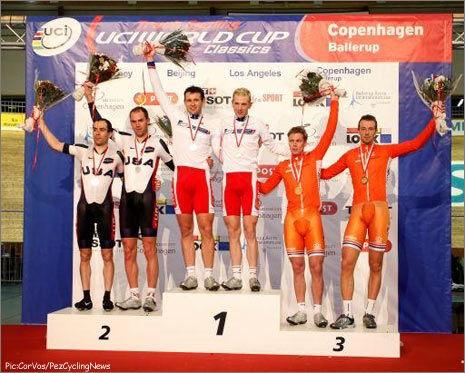
PEZ: Tell us about your fit system, please?
It’s not a system per se, more like a philosophy, which could be summed up by saying that there is a central point in which the function of the cyclist and bicycle meet. I don’t believe that the bike should be made to fit the rider exclusively; cycling is not a “natural” activity like walking or running, the body must be trained and conditioned to go fast on a bicycle. For some this comes more easily than for others, but everyone must be conditioned on and off the bike in order to maximize cycling performance.
Like Steve, I place a very heavy emphasis on the proper alignment and function of the feet as a foundation for a good position. Cleat position, foot correction, arch support and proprioceptive (Proprioception refers to the body’s ability to sense movement within joints and joint position, ed) clarity within the foot are critical aspects of proper fit.
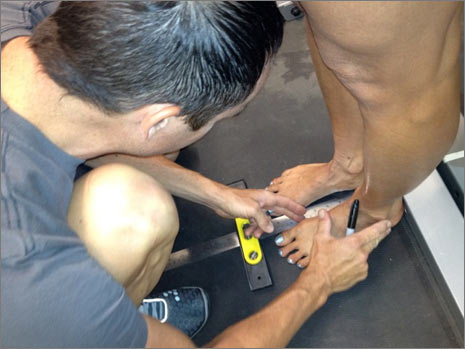
PEZ: You went all the way to Australia – was it worth it, and did you learn anything about your own position?
One of the hardest things for a fitter to do is to fit themselves. It’s difficult to get the proper viewpoint of your own movements while you are doing them. I learned an enormous amount while I was in Sydney.
I was there for almost a month, in an apartment by myself with no car. I rode my bike to and from the shop and lived and breathed bike fitting the whole time. Steve and I made big changes to my position while I was there. To say I learned things about my position would be an understatement- the work we did there led to me having insights about my position that I had been struggling to figure out for a decade.
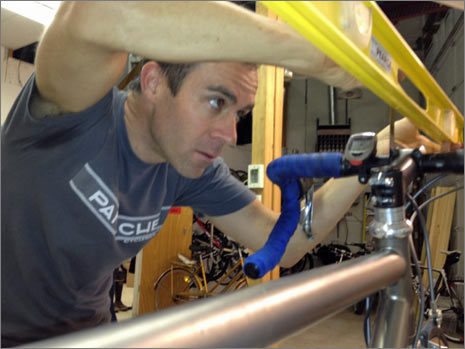
PEZ: As a percentage, when you look at cyclists, how many have poor position?
It’s hard to say, people are all over the map. I have some riders who come in and I am surprised at how little I change; for others, it’s a laundry list of things which are out of whack. As a general rule, if a rider is performing at a very high level, they are by necessity dialled in to a certain point. Although, often times that dialling is a function of random chance more than design, and many times those riders are hairs breadth away from injury.
PEZ: What’s worse – saddle too high or too low?
If you put a gun to my head, I would say too high is worse, but of course you can cause problems with either scenario. A curious point is, for some reason almost all racers tend to equate a higher saddle with better performance; and since racers almost always subscribe to a “if some is good, more is better” mentality, they end up with a saddle which is way too high as it slowly creeps up over time.
It’s as if we have all read one too many “scientific studies” (don’t get me started on those) which say that a higher saddle = higher VO2. Its complete bullshit, because raising your saddle 3 mm is not going to find you a point of “missing VO2”. If a rider does not have the functional capacity to handle that higher saddle height, everything will fall apart under load, so you are far better off riding a touch low and being capable of repeating multiple efforts at a high rate of work.
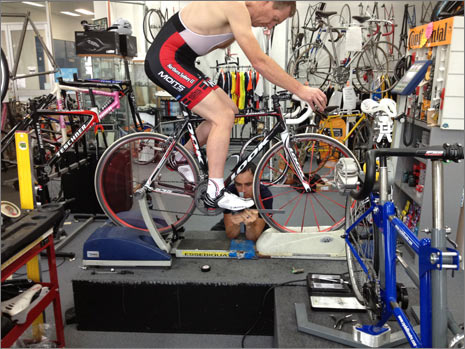
PEZ: The old rule of thumb – leg slightly bent with heel on the pedal – any good?
In the absence of a trained eye, you could do worse but it takes foot length completely out of the equation, which is a factor in overall extension. So if you have unusually long or short feet relative to your leg length, it’s probably way off; and otherwise it’s probably still only kind of accurate. Factors which influence saddle height include the rider’s symmetry, lumbar and pelvic function, pedalling style, cleat position, arch height, foot correction, femur angle within the hip capsule and saddle fore – aft. That is assuming the rider is on the correct saddle – it’s complicated!
PEZ: Crank length – how big a deal?
I think within a certain range, riders can work their way around crank length very effectively. For example, I remember Jonathan Vaughters telling me the first year he got to Europe and rode for Postal, Johan Bruyneel took one look at his bike and said “you can’t ride 180mm cranks!” which he had been riding for a few years, and put 175’s on his bike. He made do for a few seasons with those. I rode 170’s in all the 6 days I raced, and many of the guys I rode against were on 165’s and I did ok. However, for a rider who is not super stable on the saddle, pushing the envelope on crank length will come back to bite you very quickly. I believe Sarah Hammer went down from 175mm cranks and it has helped her smooth out a bit under pressure.
PEZ: What’s the most common mistake you see?
I would say most riders do not have their cleats in the right place in terms of fore-aft placement, and most riders do not have adequate arch support in their cycling shoes.
PEZ: After saddle height, what’s the most critical dimension?
Cleat position.
PEZ: How much of a negative are the UCI regulations to the perfect position?
The 5cm saddle rule is ridiculous for short or small riders; it can be a real problem. (This reg. states that the tip of the saddle must be 5 cm behind the centre line of the bottom bracket axle, ed.) Also the rule about not having your bars more than 5cm in front of the hub centre line is impossible for some track guys. It’s also ridiculous to have the same rules apply to road and track bikes. Do people at the UCI know that track bikes don’t have brakes or a derailleur? It’s pretty stupid to have road and track bikes have the same minimum weight requirements, especially when riders have to put an extra chain down their seat tube to make the weight minimum. That does not have anything to do with position, but it’s still stupid.
The saddle angle rule caused some huge problems this year, until they relaxed it a little bit. Having a saddle 100% level is potentially not healthy for a lot of individuals so I am glad they chilled out on that regulation. Most human “taints” are not a zero degrees.
PEZ: Track/road – should your position be the same?
Generally speaking, you can and should get away with a slightly more aggressive position on the track; the races are shorter, the average speeds are higher and your top end cadence requirements are higher. Also, there are no long climbs (although I do remember going up and down that banking quite a bit!). So I set up riders with a slightly lower and possibly narrower bar, and a bit more forward in saddle setback than on the road.
PEZ: If you can’t afford wind tunnel time – any tips for the optimal aero position?
Start from a perspective of optimum power production and function, then apply some common sense regarding aerodynamics. It’s a case by case basis – some riders can tolerate really narrow elbows without problems, for others it’s a nightmare. I see many riders who are too stretched out in the aero position, which tends to lead them to coming forward under pressure, which then means they are under extended and losing power. If your aero position is set up properly, you should be putting out equal or more power to your road bike for steady state efforts. If you are riding way super far forward on the nose of your TT bike saddle, something is not right.
PEZ: 3T Sphinx bars – what’s your take?
Cool piece of equipment and super fast, but now that the UCI has made a regulation that your bars cannot extend forward of a vertical line 5cm from the front hub axle centre, they will be impossible for most riders to use, since they increase reach so much – unless you have a custom bike with a super long top tube and a super short stem . Those bars were like a little window of free speed when they were briefly legal (well, they still are but its almost impossible to put a pair on a bike and have it be legal)- Cam Meyer is amazingly strong but with those bars on his bike, he straight up napalmed the peloton.
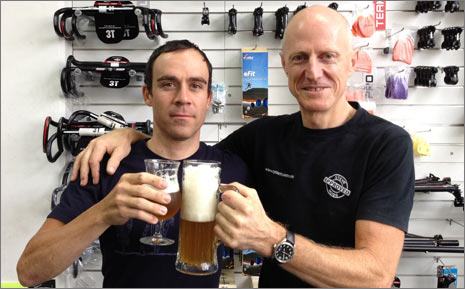
PEZ: As a percentage how much of a difference can good to bad position make?
It’s hard to say, it completely depends on how functional the rider is and how screwed up their position is to begin with. I definitely see riders who are so off the mark, I am certain they are a very long way from their potential. Maybe 20% when measured over a 100km MTB event. For me, since I have been dialled in for almost a year, I am feeling I can consistently produce much higher torque efforts without lower back issues. This was always a huge problem for me in the past.
PEZ: I have to ask – you were always a rider who made no bones about your commitment to riding clean – what’s your take on the Armstrong mess?
The ugliest lie is better looking than the best dressed secret. I am very happy this has all come to light. First off, I don’t have to have that cocktail party conversation I have had 100 times already; “You’re a professional cyclist and coach? Wow! – So…did Lance dope?” Secondly, I am proud that we are finally exorcising our closet demons. There are 59 reasons why I never became a football player, and as corrupt and screwed up as cycling is, it has enough balls to hit rock bottom. Mainstream sports will never allow or endure this level of truth. Cycling will survive this crisis, because the bottom line is that people love to ride bikes and the sport will always have a story to tell. As huge as Lance is, and for as much as he has single handed grown the sport both in the US and worldwide, cycling is bigger.
PEZ: How does a rider take advantage of your bike fit?
First, the rider has to not go super hot out of the blocks, especially if we made huge changes. An adjustment period must be taken, proportional to the amount of change made during the fit and relative to how long the rider has been cycling. Then, they must stay in touch with me over time as things settle in to make sure everything is dialled.
The rider must perform off the bike exercises in order to promote and maintain optimum function. But first, you have to check out www.colbypearce.com.
Note: Often, more specific answers to your questions can be found in the Comments below or in the eBooks section and FAQ page.
To learn more about bike fit products offered by Steve, click here.
Do you have a bike fit success story? Please go here to share.
Thank you for reading, return to the Blog page here or please comment below.
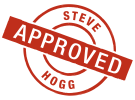
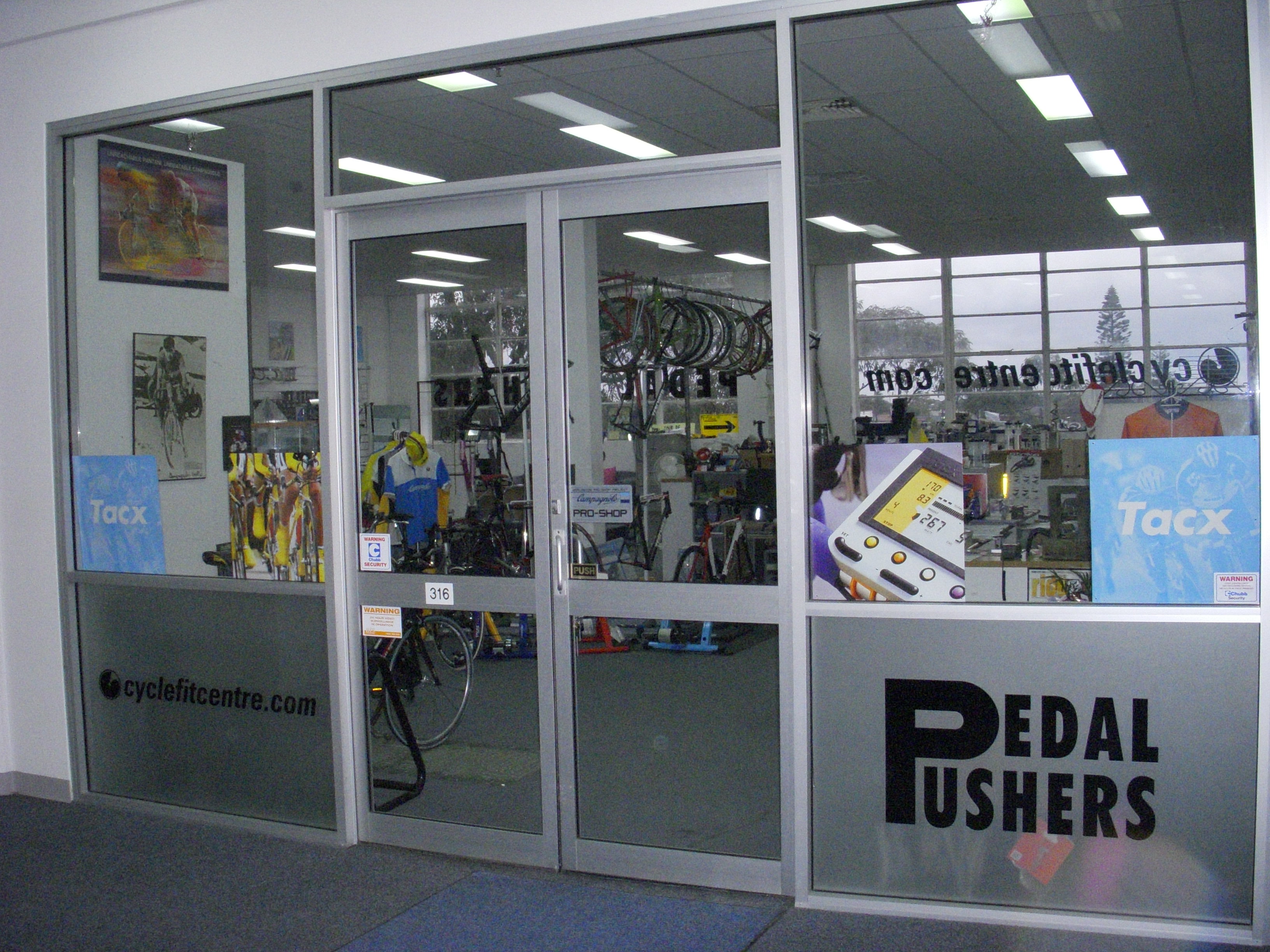
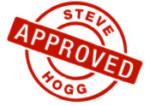

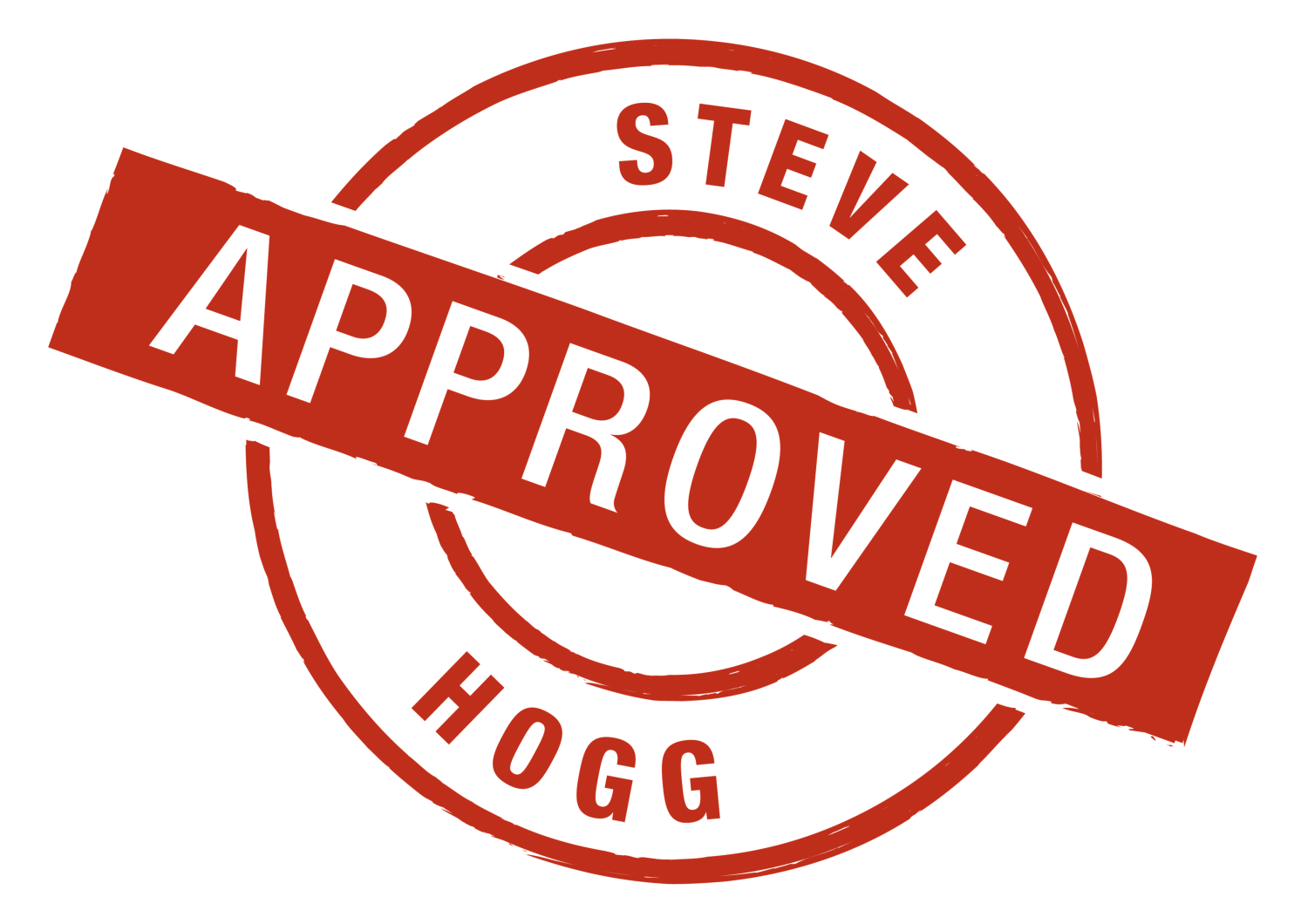

This Post Has 0 Comments